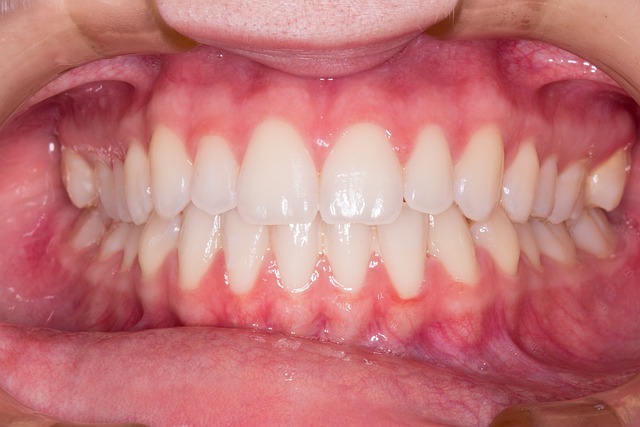
Category: Orthodontics Eugene Oregon
Orthodontics Eugene Oregon: A Comprehensive Exploration
Introduction
In the realm of dental healthcare, orthodontics stands as a specialized field dedicated to correcting misalignments of teeth and jaws, enhancing not only oral health but also overall facial aesthetics and functionality. This article delves into the vibrant world of orthodontics, specifically focusing on Eugene, Oregon—a city that has emerged as a hub for innovative dental practices. By examining various facets, from historical roots to modern trends, we aim to provide an insightful guide for both dental professionals and those seeking orthodontic treatments.
Understanding Orthodontics Eugene Oregon
Definition and Core Components
Orthodontics is a branch of dentistry that focuses on the diagnosis, prevention, and correction of misaligned teeth and jaws. It involves the use of various devices, such as braces, retainers, and clear aligners, to gradually adjust the position of dental structures over time. The primary goal is to achieve a healthy, functional, and aesthetically pleasing bite, ensuring proper alignment of teeth and supporting tissues.
In Eugene, Oregon, orthodontists employ a range of advanced techniques to cater to diverse patient needs. From traditional metal braces to modern clear aligner systems, these professionals tailor treatment plans to suit individual cases. The core components of orthodontics include:
-
Diagnostic Assessment: Orthodontists commence with a comprehensive examination, utilizing tools like X-rays, photographs, and oral exams to assess the patient’s unique dental anatomy and identify any misalignments or irregularities.
-
Treatment Planning: Based on the diagnostic findings, an individualized treatment plan is devised. This may involve orthodontic appliances, such as:
- Braces: Metal or ceramic braces attached to teeth with wire and elastomers to apply gentle pressure, gradually moving them into proper alignment.
- Retainers: Wearable devices designed to hold newly aligned teeth in place after active treatment.
- Clear Aligners: Custom-made, transparent trays that gently shift teeth over time, offering a more discreet alternative to braces.
-
Treatment Execution: Orthodontists meticulously monitor the movement of teeth and make adjustments as needed. Regular check-ups and adjustments ensure patients’ comfort and the successful alignment of their teeth.
Historical Context and Evolution
The practice of orthodontics has an intriguing historical trajectory, dating back centuries. Ancient civilizations like the Greeks and Romans were among the first to attempt correcting dental misalignments using simple tools and techniques. However, it was in the 19th century that orthodontics began to evolve into a more structured discipline.
-
Early 20th Century: This period witnessed significant advancements, with the introduction of modern braces by Dr. Edward Angle in 1897, who is widely regarded as the “Father of Modern Orthodontics.” His work focused on correcting malocclusions (bad bites) using metal braces.
-
Mid-20th Century: The field continued to flourish with improvements in materials and techniques. Stainless steel became the material of choice for braces, offering greater durability. The development of headgear contributed to treating complex bite issues.
-
Late 20th Century – Present: Orthodontics entered a new era with the emergence of clear aligners in the late 1990s. Companies like Align Technology introduced invisible braces, revolutionizing the way many people perceived orthodontic treatment. Today, Eugene’s orthodontists offer a wide array of options, catering to diverse patient preferences and needs.
Global Impact and Trends
Orthodontics Eugene Oregon is not merely localized; it has a significant global reach and influence. The demand for orthodontic services has surged worldwide, driven by changing dietary habits, increased awareness of oral health, and the desire for improved aesthetics.
International Adoption and Adaptation:
-
North America: The United States and Canada have long been at the forefront of orthodontic innovation, with Eugene contributing to this trend. Many international orthodontists seek training in these regions, adopting advanced techniques and technologies.
-
Asia Pacific: Countries like Japan, South Korea, and Australia have experienced a boom in orthodontic tourism, attracting patients from around the globe for state-of-the-art treatments at competitive prices.
-
Europe: The European market is characterized by stringent regulations and high standards, ensuring quality care. Orthodontic practices across Europe continuously evolve to meet these expectations.
Shaping Trends:
-
Digital Revolution: The digital age has transformed orthodontics, enabling more precise planning and treatment outcomes. 3D imaging, computer-aided design (CAD), and computer-aided manufacturing (CAM) have revolutionized the way braces and aligners are designed and produced.
-
Patient Expectations: Modern patients seek discreet, comfortable, and efficient orthodontic solutions. This has led to a surge in popularity of clear aligner systems, offering both aesthetics and convenience.
-
Tele-Orthodontics: The COVID-19 pandemic accelerated the adoption of virtual consultations and remote monitoring, allowing patients in remote areas to access specialized care.
Economic Considerations
The economic landscape surrounding orthodontics Eugene Oregon is dynamic and multifaceted, influenced by various factors.
Market Dynamics:
-
Growing Demand: The global orthodontic market has experienced steady growth, driven by increasing disposable incomes, rising dental tourism, and growing awareness about oral health and aesthetics.
-
Competitive Environment: Orthodontic services are highly competitive, with a mix of private practices, specialty clinics, and corporate chains offering various treatment options.
Investment Patterns:
-
Technology-Driven Investments: Orthodontists in Eugene Oregon have embraced technological advancements, investing in state-of-the-art equipment and software to enhance treatment outcomes and patient experiences.
-
Training and Education: Continuous professional development is essential in this field. Orthodontic professionals invest in workshops, seminars, and advanced training programs to stay abreast of the latest techniques and trends.
Economic Impact:
-
Job Creation: The industry supports a significant number of dental professionals, including orthodontists, dental assistants, and administrative staff, contributing to local employment.
-
Revenue Generation: Orthodontic practices generate substantial revenue through treatment fees, insurance claims, and product sales (e.g., retainers, mouthguards).
Technological Advancements
Technology plays a pivotal role in shaping the future of orthodontics Eugene Oregon, offering both improvements in patient care and business operations.
Key Innovations:
-
3D Imaging and Planning: Digital X-rays and CAD/CAM systems enable precise planning and manufacturing of orthodontic appliances, reducing treatment time and improving accuracy.
-
Clear Aligners: The development of clear aligner technology has been a game-changer, providing patients with discreet and comfortable alternatives to traditional braces. Companies like Clear正 (a fictional example) offer advanced materials and custom designs.
-
Robotics: Robotic orthodontics is an emerging field, utilizing robotic arms for precise placement and adjustment of appliances, enhancing efficiency and reducing errors.
Future Potential:
-
Artificial Intelligence (AI): AI has the potential to revolutionize diagnostic processes, treatment planning, and even patient monitoring. It can analyze vast amounts of data to provide personalized treatment recommendations.
-
Wearable Technology: Smart braces and dental trackers that monitor bite forces, jaw movements, and oral hygiene practices could become common, enabling proactive care.
-
Tele-Orthodontics and Virtual Reality (VR): The integration of VR technology can enhance patient experiences during treatments, making procedures more comfortable and engaging.
Policy and Regulation
The field of orthodontics is subject to various policies and regulations that govern its practice, ensuring patient safety and quality care.
Key Regulatory Bodies:
-
Dental Boards: State dental boards are responsible for licensing orthodontists and enforcing standards of practice, ethics, and continuing education requirements.
-
National Health Authorities: In the United States, the Food and Drug Administration (FDA) regulates orthodontic devices, ensuring their safety and efficacy. Similar bodies exist in other countries, such as the European Medical Agency (EMA).
Legislative Frameworks:
-
Licensing and Certification: Orthodontists must obtain licenses to practice, often involving passing written and practical exams. Certifications in specialized areas, like orthognathic surgery, enhance their expertise.
-
Insurance Coverage: Policies vary regarding orthodontic coverage, with some insurers offering comprehensive plans while others have restrictions or higher deductibles. Understanding insurance policies is crucial for both patients and providers.
-
Data Privacy and Security: With the digital transformation of patient records, strict data protection regulations, such as HIPAA (Health Insurance Portability and Accountability Act) in the US, must be adhered to.
Challenges and Criticisms
Despite its advancements, orthodontics Eugene Oregon faces several challenges and criticisms that require strategic solutions.
Common Issues:
-
Cost and Accessibility: Orthodontic treatments can be expensive, making them less accessible to some patients. High treatment costs and limited insurance coverage contribute to this challenge.
-
Treatment Time: Traditional braces often require a prolonged treatment period, which may impact patient compliance and satisfaction. Clear aligner systems offer faster alternatives but have their own set of considerations.
-
Patient Comfort and Compliance: Some orthodontic procedures can be uncomfortable, and patient non-compliance with treatment plans (e.g., failing to wear retainers) can lead to suboptimal outcomes.
Proposed Solutions:
-
Affordability Initiatives: Orthodontic practices can partner with insurance providers and government bodies to develop affordable care plans, offering financial assistance or payment plans for patients.
-
Efficient Treatment Protocols: Implementing streamlined treatment protocols, leveraging technology for precise planning, and offering faster alternatives like clear aligners can enhance patient experiences.
-
Patient Education and Engagement: Improving patient education about the importance of compliance and oral hygiene during treatment can lead to better outcomes and higher satisfaction levels.
Case Studies: Real-World Success Stories
Case Study 1: Transforming a Complex Bite
Patient Profile: Sarah, a 17-year-old high school student, sought orthodontic treatment due to a severe overbite and crossbite, causing pain and affecting her confidence.
Treatment Approach: An experienced orthodontist in Eugene, Dr. Wilson, diagnosed a Class III malocclusion with a deep overbite and crossbite. He recommended a combination of traditional braces and jaw surgery (orthognathic procedure) to correct the bite and align the jaws.
Outcome: After 2 years of treatment, Sarah achieved a beautifully aligned smile and improved bite function. The surgical component corrected her jaw alignment, providing long-term stability. She returned to school with enhanced self-esteem and confidence, attributing her positive experience to Dr. Wilson’s expertise and compassionate care.
Case Study 2: Clear Aligners for Discreet Correction
Patient Profile: Mark, a young professional, had always been self-conscious about his slightly crooked teeth. He sought a discreet solution that aligned with his active lifestyle.
Treatment Solution: Dr. Johnson, another Eugene-based orthodontist, suggested clear aligner therapy using a custom-made series of transparent trays. Mark committed to the 18-month treatment plan, wearing the aligners for 22 hours daily.
Success Story: Mark’s treatment was highly successful, resulting in straight teeth without compromising his professional image or social life. He appreciated the convenience and discreet nature of the clear aligners, which he could remove during meals and while engaging in recreational activities.
Future Prospects: Emerging Trends and Strategic Considerations
The future of orthodontics Eugene Oregon holds immense potential for growth and innovation.
Growth Areas:
-
Tele-Orthodontics Expansion: With ongoing advancements in digital technology, tele-orthodontic services are expected to grow, making specialized care more accessible to remote communities.
-
Personalized Treatment: Using AI and machine learning, orthodontists can offer highly personalized treatment plans, taking into account individual patient needs and preferences.
-
Integration of Wearable Technology: Smart braces and dental trackers will play a more significant role in monitoring patient progress, providing real-time data for enhanced care.
Emerging Trends:
-
Minimal Invasive Procedures: Orthodontists are exploring less invasive techniques, such as micro-implants and mini-braces, to reduce treatment trauma and recovery times.
-
Biomaterials: Biodegradable and biocompatible materials in orthodontic appliances will gain popularity, aligning with the growing demand for eco-friendly dental solutions.
Strategic Considerations:
-
Continuous Education: Orthodontists must stay abreast of technological advancements and clinical research to provide cutting-edge care. Regular training sessions and workshops will be essential.
-
Patient-Centered Care: Emphasizing patient comfort, satisfaction, and education will remain crucial. Orthodontic practices should integrate technology to enhance the overall patient experience.
-
Global Collaboration: International collaboration in research and clinical practice can foster innovation and improve global orthodontic standards.
Conclusion: Shaping the Future of Oral Health
Orthodontics Eugene Oregon has evolved from a specialized niche to a dynamic field that significantly influences global dental healthcare. With its rich history, technological advancements, and continuous innovation, it continues to shape the future of oral health and aesthetics. From traditional metal braces to cutting-edge clear aligner systems, orthodontists in Eugene and beyond are equipped to address diverse patient needs.
As we look ahead, the field is poised for further growth, driven by emerging trends, increasing demand, and strategic considerations. Orthodontics will remain a vital component of comprehensive dental care, ensuring that individuals worldwide can enjoy healthy, beautiful smiles.
FAQ Section: Answering Common Queries
Q: How long does orthodontic treatment typically take?
A: Treatment duration varies depending on the severity of misalignment and the chosen treatment method. Braces can take 1-3 years, while clear aligners may be completed in as little as 6 months to a year.
Q: Are there any risks associated with orthodontic treatment?
A: As with any medical procedure, there are minimal risks, including discomfort during treatment, potential damage to teeth or gums if appliances are not properly fitted, and rare instances of infection. Regular check-ups minimize these risks.
Q: How expensive is orthodontic treatment in Eugene, Oregon?
A: Treatment costs can vary widely based on the complexity of the case and chosen treatment plan. Clear aligner therapy tends to be more affordable than braces, but insurance coverage may impact overall expenses. Discussing financial options with your orthodontist is essential.
Q: Can adults undergo orthodontic treatment?
A: Absolutely! Orthodontic treatment is not limited to children. Many adults seek orthodontic care to correct misalignments or enhance their smile for confidence and self-esteem.
Q: How often should I visit the orthodontist during treatment?
A: Regular check-ups are crucial for optimal results. Patients typically visit every 4-6 weeks, but your orthodontist may recommend more frequent visits based on your specific needs.









